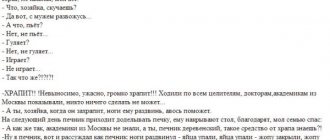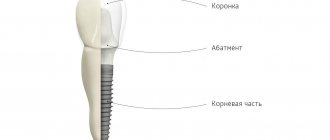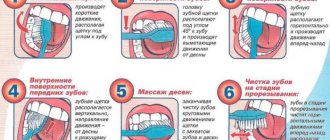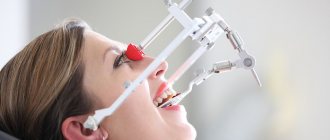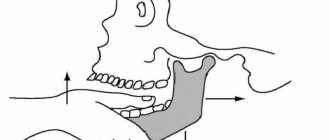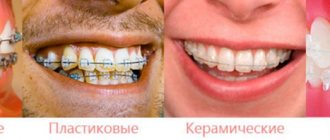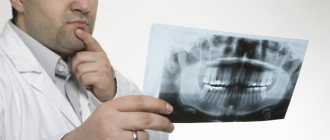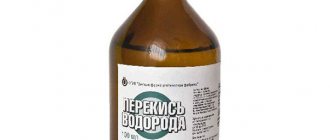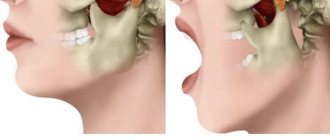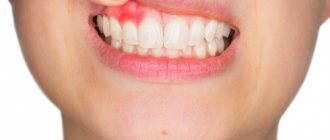The most common form of jaw injury is a bruise. No one is immune from this. For example, with a strong blow to the jaw, soft tissues, blood vessels, and capillaries are affected, resulting in the formation of hematomas and swelling. This is accompanied by severe pain and discomfort.
To avoid complications, it is recommended to consult a doctor immediately after injury. The fact is that impaired jaw function entails a chain of negative consequences: difficulties while eating, deterioration in the quality of spoken speech, etc.
What causes bruises?
Jaw injury may result from:
- falls;
- blow;
- fights;
- children's games;
- accidents, etc.
The severity of the injury is determined taking into account the following factors:
- features of the surface or object that caused the injury;
- impact intensity;
- affected area of the face;
- condition of bone tissue before the incident.
The strength of the bruise and possible complications depend on the listed indicators. Regardless of the severity, it is important to see a doctor to evaluate the condition and prescribe appropriate treatment. This will avoid unforeseen consequences and quickly restore the damaged area.
What happens to the jaw after a blow?
A hit to the jaw will cause the opponent to be disoriented, lose coordination of movements and be knocked out.
The result of this can be a fracture of the jaw in one or several places at the same time, depending on the power and vector of the impact. The physiological specificity of the fighter, the weight and degree of rigidity of the glove also plays a role. A jaw fracture is one of the most unpleasant types of fractures and can be very unsettling. Often a person is unable to open his mouth or the jaw moves to one side. A fracture of the upper jaw is characterized by double vision and numbness of the skin under the eyes. This is a fairly serious injury that can lead to damage to the spine in the cervical region. A fracture of the jaw is usually indicated by severe pain in the lower jaw, at the place of its attachment to the upper jaw, near the ear. The characteristic of pain is such that if the left side was hit, then pain occurs on the right or vice versa.
Clinical picture
First of all, the doctor conducts a visual examination of the bruised area to identify hidden injuries that cannot be identified by a person without medical education. For example, symptoms of dislocations or fractures may not appear immediately. Professional consultation allows you to begin timely treatment, if required.
To recognize a jaw bruise, it is important to pay attention to the following symptoms:
- severe pain in the place where the blow fell, intensifying when pressed;
- visual signs (eg, swelling, redness, abrasions, bruises);
- limitation of jaw mobility when yawning, talking, chewing;
- inflammation of the lymph nodes;
- general weakness.
Jaw bruises are less dangerous than more severe injuries, so recovery is usually quick.
The doctor may order an x-ray or computed tomography to establish an accurate diagnosis. These studies will assess the condition of the internal tissues of the affected area.
A little anatomy
The jaw is the most protruding part of the head, so an attack on it acts like a long lever when turning, concussing the brain with maximum force due to its impact against the wall of the skull.
A blow to the jaw also causes a concussion. The main center responsible for coordinating the body – the brain stem and cerebellum – also suffers. We must not forget that the jaw at the place of its articulation closely interacts with the ear, which, in addition to the function of hearing, is also an organ of balance. An attack to the lower jaw affects the person's balance, and he immediately falls.
Primary treatment
A bruise can be diagnosed by external signs even before seeing a doctor. To eliminate pain and discomfort, it is recommended to perform the following measures:
- apply a tight bandage;
- Apply a cold compress to the bruised area.
For quick and painless treatment, the face must be at rest. It is better to avoid warming compresses, as they can lead to the development of inflammatory processes.
The consequences of bruises can be such conditions as fractures, fractures, dislocations of the hard tissues of the jaw and even a concussion. Treatment differs depending on each case, so you should not self-medicate. It is also worth noting that most injuries have similar symptoms, so they are easy to confuse. Only a doctor can make a correct diagnosis. If you cannot go to the hospital yourself, it is recommended to call emergency medical help.
Medical care for jaw injuries
There is no specific treatment plan in such cases. But there is a list of general recommendations. Visits to the doctor are usually limited to one visit to evaluate the x-ray or CT scan.
If the patient escaped with an ordinary bruise, then treatment will be carried out at home. The patient will be given a bandage to hold the bones in the correct position. As mentioned above, you need to apply cold compresses. Ice, snow, and sterile gauze moistened with cold water are suitable for these purposes. Warming the affected area is contraindicated to avoid inflammation and worsening the clinical condition.
To eliminate pain, taking analgesics is allowed. Following simple rules will allow you to quickly get rid of the consequences of a bruise and return to your normal life.
Likely consequences
Any injury with negligence and non-compliance with medical recommendations can lead to all sorts of complications. If we talk about a bruise of the jaw, then it can develop into a post-traumatic form of periostitis, myositis or deformation of bone tissue. Any complications will require lengthy and likely expensive treatment. Injury to the masticatory muscles can cause limited mobility of the lower jaw, complicate chewing and swallowing, which directly affects the state of the gastrointestinal tract and metabolic functions of the body.
Bruised jaw. Consequences of injury and prevention
Go back Facial injuries are quite common. Even one careless movement can lead to a bruise or dislocation, which entails not only a painful condition, but also serious consequences, and also affects the aesthetic appearance. The most common injury is considered to be a bruised jaw. A jaw bruise is a disease that implies a mechanical injury that does not violate the integrity of the facial tissues and jaw bones. With a serious injury to the jaw, the bruise can spread to the upper and lower jaw. But, in 99% of cases, patients present with a bruise of the lower jaw. The treatment in both cases is identical. A bruise is the mildest injury, so seeking help in a timely manner will avoid unpleasant stages of the disease.
Causes
There may be several reasons that lead to a jaw bruise. The most common are: falls, as well as blows with a blunt object to the jaw area. Often such an injury can occur during a fight or an accident. How serious a bruise is can be determined based on the severity of the object during a fight or the force of the vehicle collision in an accident. A significant role is played by the elasticity of the skin and its damage before injury. After all, the healthier the bone tissue and skin on the face, the easier the bruise will be.
Symptoms
After a bruise occurs, the patient experiences the following symptoms:
- acute pain in the jaw area, which worsens during actions;
- redness of the facial skin, as well as damage in the form of scratches, abrasions and wounds;
- there is no opportunity to eat or talk;
- general deterioration of the body;
- fever and enlarged lymph nodes.
Treatment
It is quite simple to identify a jaw bruise, because it is practically no different from bruises of other parts of the body. Treatment is the same as for other bruises. The first step is to apply a bandage to the sore spot along with a cold compress of ice or cold water. Next, the jaw that has received a bruise must be provided with complete rest in order to avoid unpleasant consequences. There is no need to warm up the bruised area with heating pads or other warming agents in order to prevent inflammation from occurring. Diagnosis of a bruise can be imaginary, since behind the bruise you may not notice a dislocation or, even worse, a fracture of the jaw. Therefore, immediately after providing first aid, you should immediately go to the hospital to establish an accurate diagnosis and further treatment. An accurate diagnosis can be easily established at a medical center using an X-ray image.
Consequences and prevention
Untimely treatment of the disease or neglect of medicine can lead to very serious consequences, such as jaw deformation - periostitis. Also, untimely treatment can provoke restriction of jaw movement: the inability to fully chew or yawn. By seeking help from a doctor immediately, the disease can be treated quickly and favorably. Paying attention to your actions will help you avoid such an unpleasant injury as a bruise.
For consultations at the KIITOS dental clinic, please contact the administrators.
How to throw a punch to the jaw?
Beginners are often puzzled, where should they hit when hit in the jaw? The target is the entire lower jaw area. He is vulnerable to defeat. Especially the center of an abstract line. It goes from the corner of the mouth vertically down. It is better to hit this place with side blows. The working tool is the base of the palm. The fingers are turned outward. The execution is straight, only the elbow is moved to the side. The action goes from the elbow to the center of the palm. The goal is achieved along a vector to the area between the back of the head and the opponent’s ear.
You can act in a sweeping manner using the heel of your palm. The effect is a slap in the face.
A tense neck makes it easier to knock out. And in a fight, a knockout often occurs on the counter. The dynamics of the impact and the approaching body are combined. It is not necessary to hit powerfully, the main thing is to hit harder and harder. The more powerful the fist clenched at the end of the attack, the tougher it is. Here you need to work well with your feet. The effectiveness of the result depends on the rigidity of such an algorithm: first of all, the fist acts, then the shoulder, back, the leg is connected, and finally the ankle.
With a different bend in the lower jaw, you can strike with a massive side slap using the center of the palm. A side elbow attack will also do. To enhance effectiveness at a short distance, the anvil method is used: the free hand fixes the opponent’s head.
Examples of effective techniques for striking the jaw
There are different techniques to defeat this target. Below are some examples of them
- The edge of the palm is used from the position of the thumb. Impact area:
Execution:
Method of training: you need to hit the hand, this is an imitation of damage to the jaw.
- A blow to the jaw from below. The uppercut is involved.
- The center of the palm is used. The power is directed towards the top of the opponent's head. The implementation is sharp and powerful.
- The side of the jaw is affected. An example of a correct movement:
- "Twist the jaw" technique. The palm is involved. It follows in a straight line with a twist from the attacker, and then downwards. During boarding, the jaw shifts and falls out of the grooves.
After such attacks, it becomes clear why a blow to the jaw ends in a knockout.
Basic postulates
When performing, it is not dominoes that are used, but a flat area. The fist is clenched as tightly as possible during the second of impact. The fingers form the talar plane. The initial phalanxes are used for the attack. The entire body weight is invested in the attack. The arm, shoulder and hip are used at one time.
For the correct technique, it is optimal to use the fist or the center of the palm. The first option takes a lot of time to master.
What is a blow to the jaw called? It all depends on the technique used.
Examples:
1. Direct. Usually it is inferior in power to the side version by 50 - 70%. It's harder for them to get knocked out. They are used more to open up the target for more serious strikes, such as a jab or hook.
Basics: a completely relaxed hand is thrown at the opponent, and at the moment of defeat it tenses.
Principles of attack from the right.
- The fighter takes a side stance.
- The body turns slightly to the right.
- Legs are slightly bent.
- Most of the mass is concentrated on the right leg. The leg is positioned on the entire foot.
- The left leg is on the toe only. Her heel turns outward.
- The right arm is extended at the elbow. A right angle is formed. She moves back a little.
- The left one forms a defense for the jaw, moving forward. At the same second, the legs straighten sharply. The body turns to the left. The right hand should be thrown forward. Maintain jaw height. The weight is on the left leg. She stands on her entire foot. And the right one is on the toe, its heel turns outward. Chin at right shoulder.
- Having implemented the blow, the fighter quickly takes the original stance.
Actions with the left are performed in the same way, only the participating parts of the body turn in the other direction. At the end, the initial stance is formed again.
The vector of a direct attack is affected by the opponent's height. And the vector in rare cases turns out horizontally, most often: from above or slightly upward. With the upper attack you need to lift the enemy's head across the ring, with the lower attack you need to open the mouth and hit the chin. Example in this image:
All contacts should be made sharply and shake your head.
2. Oblique. Produced from the side, but slightly lower. He is secretive and his power is great. The battle usually starts with him.
Technique:
The first 5 points are identical to the direct assault technique. 6. The right arm should be straightened. The angle is obtuse. She moves backwards. 7. The same actions as in a direct attack, only the right hand follows upward to the left side - into the opponent’s jaw (the elbow does not rise much to the side, the arm does not extend in it). When attacking, the hand is directed downwards, towards the stomach, with the chin at the right shoulder. 8. Return to the stance.
Nuances: with a sharp attack, the right leg may move out of position. Then you need to put it back or put your left leg forward. The legs form a stance position.
The algorithm for an oblique attack from the left is the same, only from other sides.
3. From below. Execution with the left.
Technique:
- Combat stance.
- Turn the body to the right, but less than during oblique attacks. It bends towards the front.
- Leg bending, but more than with an oblique step.
- Large mass on left leg.
- The left arm straightens slightly at the elbow. Moves backwards.
- The legs and torso straighten sharply. The mass is concentrated on the right leg. She stands on her entire foot. The left one is on the toe. The heel is slightly outward.
- The left hand follows from the lower direction to the upper - into the jaw of your counterpart. The elbow is not raised to the side. The arm is slightly extended, but not straightened when attacking. In parallel, the right hand should be placed on the stomach. The chin is directed towards the left shoulder.
- Returning the starting stance.
Execution on the right is carried out according to the same principles, but from other sides.
The same nuances may arise here as when implementing an oblique attack. The solutions are similar.
Defense
What to do after a blow to the jaw? Get treatment and draw conclusions. And to avoid this, you need to perfect your defense. But only true pros are capable of this. Its essence lies in the fact that you need to have time to turn your head in the direction of the attack, but ahead of it. This is how the blow is softened, or it passes through.
State of the brain after jaw damage
Since the anatomical location of the jaw is such that certain actions can cause a concussion, it becomes a frequent target during combat.
Missing an attack on it does not immediately cause pain. The fighter temporarily loses consciousness. So why does a blow to the jaw knock a person out so much?
Here we can recall Archimedes' law. Its essence is that if you use a lever of a decent length, you can implement effective operations. And the longer its length, provided that the fulcrum is optimally located, the less effort needs to be applied.
The brain is located at the top of the skull. The mandible is its lowest point. And the brain is vulnerable to various types of damage due to impacts. The jaw is diametrically arranged on the other side. She is the very lever that can shift the brain. And sudden attacks can lead to a similar state.
And the boxer who has suffered from them begins to have poor orientation in space, feels nothing and loses consciousness. Doctors usually diagnose a concussion. In the worst cases, a jaw fracture is also added. In very rare situations, coma occurs.
The intensity of vibrations during the amplitude of head rotation is of great importance. If you just shake your head from side to side, you will already feel some metamorphoses. The higher the indicated intensity, the more severe the effect on the brain. And when vibrations are caused by a powerful assault, the brain is shifted off its own axis.
When a boxer takes the correct stance, he lowers his head slightly, thereby hiding the opponent's potential target. He also defends her with his hands. And during the strike, he will try to avoid defeat along a certain trajectory. And it may not receive a devastating attack.
If the brain is abstractly focused on the coordinate axis, then the following picture will be obtained:
In a calm position of the brain, these axes follow strictly in the center. After damage to the jaw, the brain shifts relative to these axes. The displacement can go in different directions. Impact vectors are of great importance here. And here the principles of inertia apply.
A hit to the jaw gives a sharp impulse to the entire skull. And the brain does not move when the outer walls of the skull move to the side. But then it moves by inertia. A resonance is formed. There are vibrations in another part of the skull. And the substance is repeatedly displaced over a microscopic distance. Cerebrospinal fluid begins to circulate poorly. These are signs of a concussion.
When encountered attacks are skillfully implemented, all designated processes are multiplied. The point of defense here is to have time to skillfully turn your head so as to soften the force of offensive blows.
First aid and treatment of bruises
Ice pack on problem area
Once the location of the damage has been identified, it is necessary to begin simple manipulations. Of course, they will depend on the nature of the damage. If there are open wounds, first of all they must be washed and treated with antiseptic.
Suitable products for this include hydrogen peroxide, Chlorhexidine, Miramistin, Bepanten. Before applying the antiseptic, the wound can be washed with soapy water. The bleeding area must be covered with a clean cloth or, if available, a sterile bandage.
Then apply cold to the affected area through the cloth. This can be an ice pack or a regular towel soaked in cold water, which is applied through a waterproof film.
For severe pain, the following medications are recommended by mouth:
- Analgin;
- Ketorol;
- Nurofen;
- Sedalgin;
- Nise;
- Took;
- Tempalgin;
- Nemesis.
Folk remedies
There are several proven, simple and at the same time effective ways to have the positive effects of alternative medicine. They are indispensable products for pregnant women, children, as well as people who have a severe allergic reaction to medications. You can make a choice based on personal preferences or doctor’s recommendations.
Treatment at home for bruises can be carried out using the following means:
- Table salt solution. Compresses are prepared from it, which are used for any complexity of bruises. To prepare, a tablespoon of salt is dissolved in 150 ml of boiled water. Then take a sterile bandage, soak it in the solution and apply it to the problem area. The compress is covered with a thick cloth on top. The gauze pad with salt can be left overnight.
- Grated potatoes. The tubers should be washed and cleaned first. Grate one tuber on a coarse grater, place in linen cloth and wrap several times. After applying the bruise, cover the top with a thick towel. Compressor exposure time is 30-40 minutes. For best results, make 3-4 applications in a row.
- Cabbage leaf. Before applying it, you should knead it a little or make cuts on it to let the juice out. The sheet is applied to the sore spot 2-4 times a day until it dries completely.
- Onion and garlic. The two ingredients are ground and mixed together. The resulting slurry is added with half a tablespoon of salt; it is recommended to wrap the mixture in gauze and place it in the area of the bruise.
- Beetroot and liquid honey. Finely grated root vegetables are mixed with a tablespoon of natural honey. The procedure is carried out 1-2 times a day for 2 hours.
- Laundry soap. This remedy helps reduce the pain response. The soap is grated and mixed with raw chicken yolk. I apply a compress every half hour up to 6-8 times a day. You can also rub a damp cloth with laundry soap and apply an application to the bruised area.
- Apple vinegar. This is one of the most effective remedies. To prepare the solution, you need to take 2 teaspoons of vinegar and dilute it in 1 liter. water. Soak a clean cloth in the solution and apply 3-4 times a day for half an hour.
Popular folk remedies for bruises
The video in this article shows how to properly apply a warm and cold compress for bruises.
